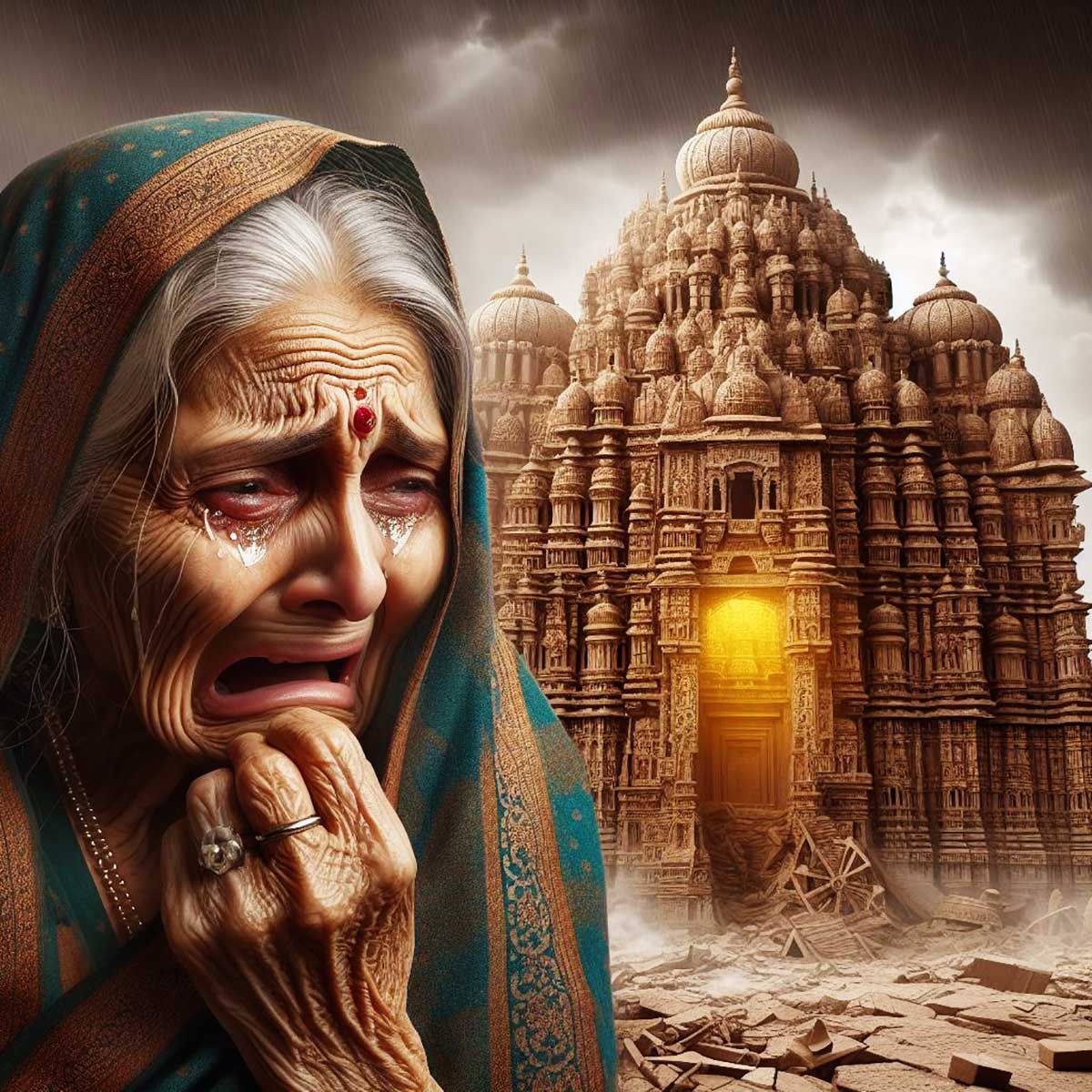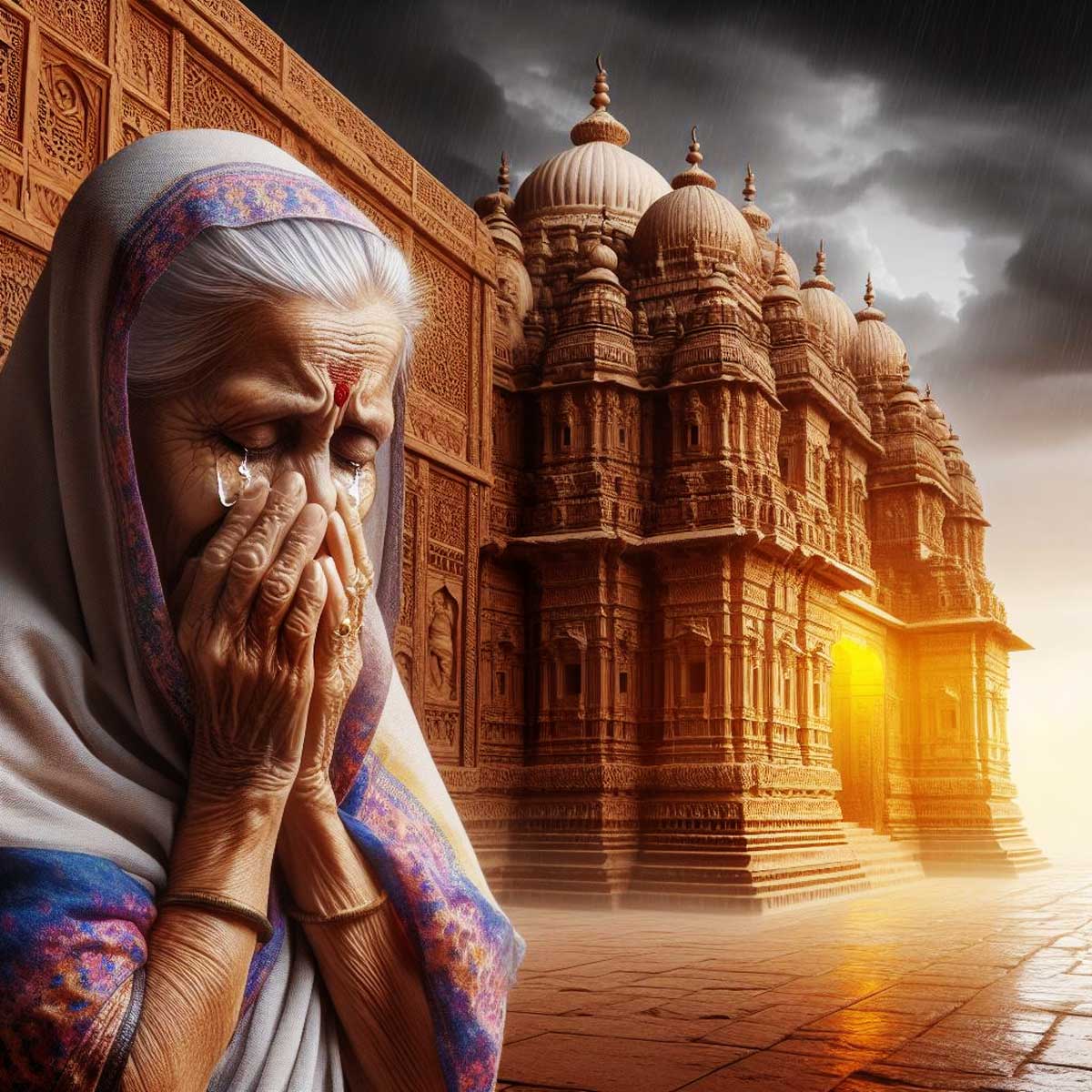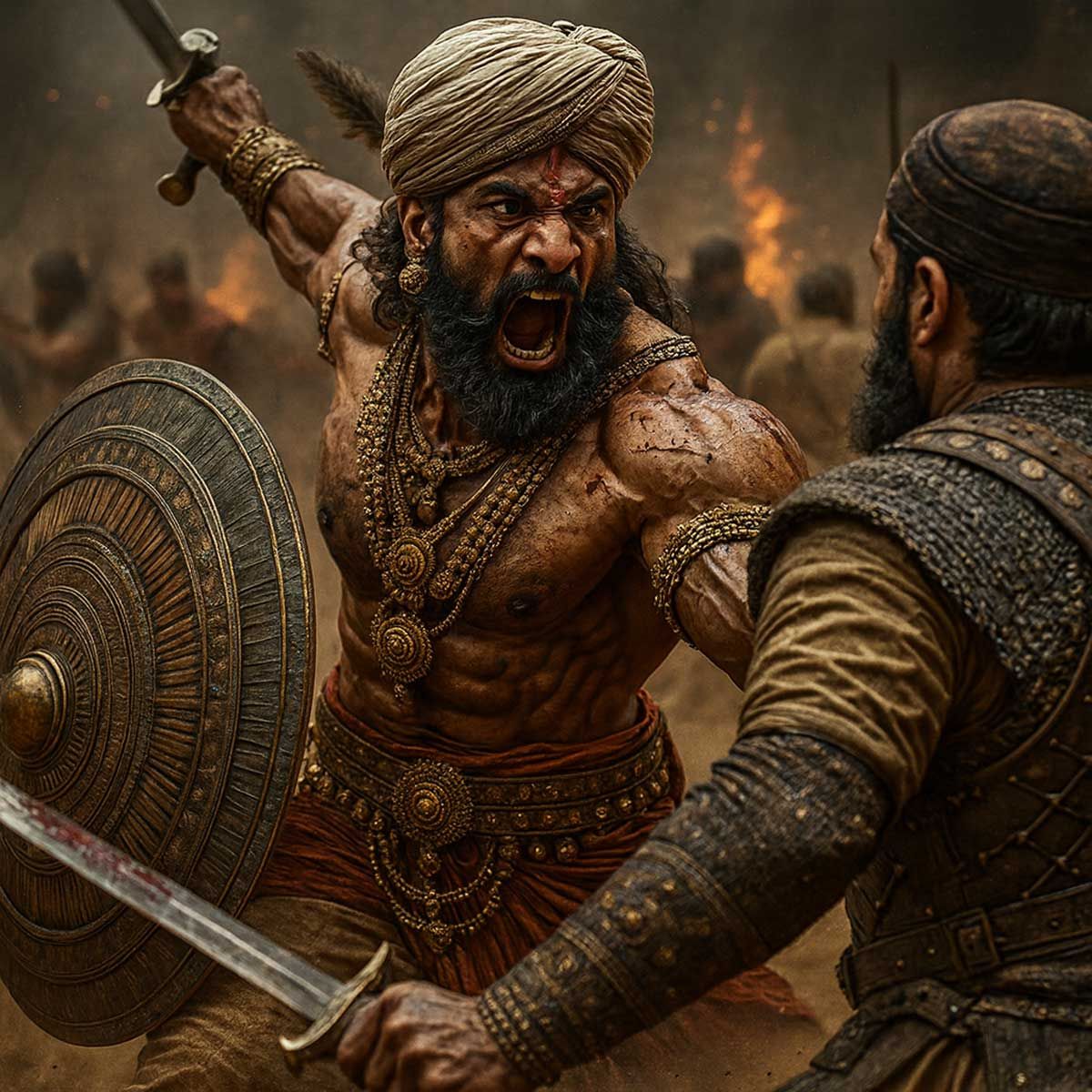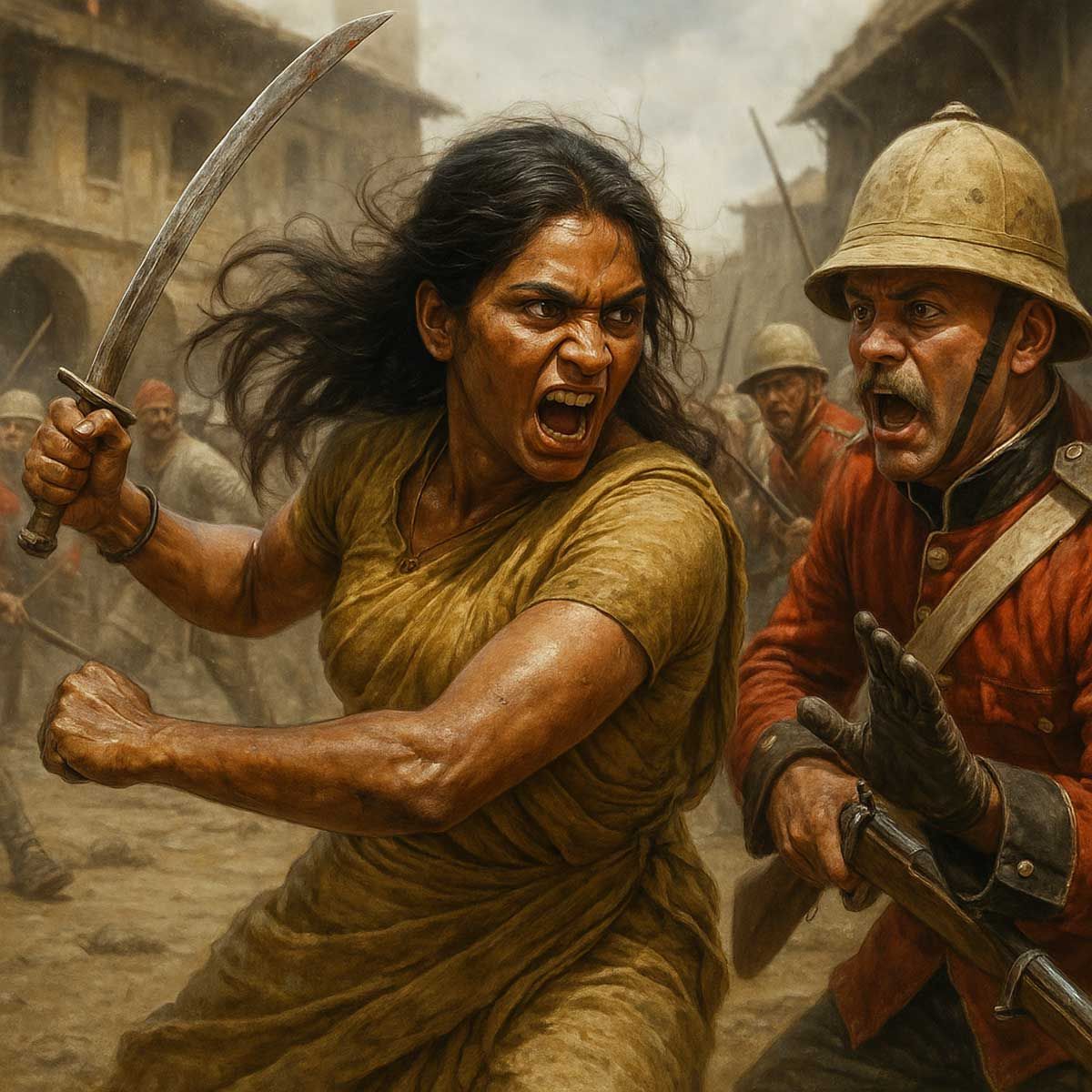More Coverage
Twitter Coverage
Satyaagrah
Written on
Satyaagrah
Written on
Satyaagrah
Written on
Satyaagrah
Written on
Satyaagrah
Written on
Join Satyaagrah Social Media
In a landmark revelation, ASI's Gyanvapi report claims a temple predating the mosque, with pillars & carvings intact, amidst a storm of cultural debate, pre-Aurangzeb-era relics fuel a historic reckoning for India's heritage, Owaisi and coterie cries fowl

In a recent development, the Archaeological Survey of India (ASI) has suggested that the Gyanvapi mosque was constructed on the ruins of a pre-existing Hindu temple. This claim has emerged from the Kashi Vishwanath-Gyanvapi case, where the lawyer representing Hindu petitioners, Vishnu Shankar Jain, addressed the media with these findings.
|
According to Jain, a comprehensive 839-page report by the ASI was released to the involved parties by the court. This report clearly states that the mosque, which is located next to the Kashi Vishwanath Mandir, was built on the remains of a large Hindu temple. This temple was reportedly demolished in the 17th century during Aurangzeb's reign.
Jain emphasized that there is substantial evidence in the survey report affirming the existence of a temple at the site where the mosque now stands. Interestingly, remnants of Hindu deities were discovered in two basements during the survey. Furthermore, parts of the original temple, including pillars, were reportedly used in constructing the Gyanvapi mosque.
He also highlighted a specific finding: a stone inscribed in Persian, detailing the order and date of the temple's demolition. Additionally, another stone with "mahamukti" inscribed on it was found. Another significant claim made by Jain was about the western wall of the mosque, which he asserts is part of the original temple's structure. This wall features a "ghanta" (a large bell) and a "swastik" symbol, further supporting his claim.
The survey report, as per Jain's statement, also mentions that the basement's roof rests on pillars typical of Nagar style temples. He concluded, "These evidence indicate that when the temple of Adivishwara was demolished by Aurangzeb in the 17th century, a grand temple was pre-existing there."
|
Vishnu Shankar Jain, representing the Hindu petitioners in the ongoing Gyanvapi case, has announced intentions to request a further survey. Specifically, Jain wants to examine the wazu khana, an area used for ablutions before namaz (prayers). He stated, "on the basis of the report, they would present their side by placing evidence before the court during the next hearing on February 6."
This development follows a day where 11 individuals from both Hindu and Muslim communities sought access to the ASI's survey report of the Gyanvapi complex, which is adjacent to the Kashi Vishwanath temple.
In a related response, Advocate Hari Shankar Jain, reacting to the ASI's findings, emphasized that the report conclusively shows that a temple existed at the site where the Gyanvapi mosque now stands. He urged the Indian government to recognize the site as a "national monument" and advocated for its transfer to the Hindu community through legal means.
Hari Shankar Jain, in his statement to ANI, said, "The report clearly states that a temple existed at the site (of Gyanvapi mosque). The Government of India should take further steps in this matter, declare it a national monument and handover the whole area to Hindus by passing a law. A trust like the one in Ayodhya should be made here also so that offering of prayers can begin."
The ASI's report states, "The western wall of the Gyanvapi mosque existing structure is the remaining part of a pre-existing Hindu temple. This wall, made of stones and decorated with horizontal mouldings, is formed by remaining parts of western chamber, western projections of the central chamber and western walls of the two chambers on its north and south. The central chamber attached to the wall still exists unchanged whereas modifications have been made to both the side chambers."
|
Furthermore, the ASI report delves into the details of the mosque's architectural elements. "Minute study of the pillars and pilasters in corridor suggests that they were originally part of the pre-existing Hindu temple. For their reuse in the existing structure, vyala figures carved on either side of lotus medallion were mutilated and after removing the stone mass from the corners that space was decorated with floral design. This observation is supported by two similar pilasters still existing on the northern and southern wall of the western chamber in their original place," added the ASI.
The report also mentions an Arabic-Persian inscription discovered inside a room of the mosque, which provides a crucial historical timeline. "The Arabic-Persian inscription found inside a room mentions that the mosque was built in the 20th regnal year of Aurangzeb (1676-77 CE). Hence, the pre-existing structure appears to have been destroyed in the 17th century, during the reign of Aurangzeb, and part of it was modified and reused in the existing structure," the report clarifies.
Based on comprehensive studies, the ASI concludes, "Based on scientific studies/survey carried out, study of architectural remains, exposed features and artefacts, inscriptions, art and sculptures, it can be said that there existed a Hindu temple prior to the construction of the existing structure."
|
|
The ASI states, "Based on the scientific studies and observations on central chamber and main entrance of the pre-existing structure in existing structure, western chamber and western wall, reuse of pillars and pilasters of pre-existing structure in the existing structure, inscriptions on the existing structure, Arabic and Persian inscription on the loose stone, sculptural remains in cellars, etc. it can be said that there existed a large Hindu temple, prior to the construction of the existing structure."
This comprehensive survey by the ASI was initiated following a directive from the district court, which acted upon claims made by Hindu petitioners. These claims suggested that the 17th-century mosque was constructed over a temple that previously existed on the site.
The report details the process undertaken by the ASI, stating, "In compliance of the order of the District Court, Varanasi, dated July 21, 2023, affirmed by the High Court of Allahabad by order dated August 3, 2023, and the Supreme Court of India by order dated August 4, 2023, the Archaeological Survey of India (ASI) carried out a scientific investigation and survey in a 2150.5-square-meter area fenced with steel grills in and around the existing structure (excluding the areas sealed by the orders of the Supreme Court). All the objects which were noticed during the scientific investigation or survey in the complex were duly documented. These objects include inscriptions, sculptures, coins, architectural fragments, pottery, and objects of terracotta, stone, metal, and glass."
Further highlighting the extent of their findings, the ASI report mentions, "During the present survey, a total of 34 inscriptions were recorded and 32 stampages were taken."
|
|
ASI has provided additional details in its survey report about the Gyanvapi mosque, revealing the reuse of elements from earlier temples. The report states, "A series of cellars were also constructed to the east to create additional space and a large platform in front of the mosque for accommodating a large number of people for prayers. Pillars from earlier temples were reused while making cellars in the eastern part of the platform. A pillar decorated with bells, niches for keeping lamps on all four sides, and bearing an inscription of Samvat 1669 is reused in cellar N2."
The ASI's findings also include discoveries made underneath the mosque. "Sculptures of Hindu deities and carved architectural members were found buried under the dumped soil in cellar S2," the report says. This indicates a significant presence of Hindu artifacts and architectural features within the mosque's structure.
The report further details the linguistic diversity of the inscriptions found. "The inscriptions are in Devanagari, Grantha, Telugu, and Kannada scripts. Reuse of earlier inscriptions in the structure suggests that the earlier structures were destroyed and their parts were reused in construction of the existing structure." This finding points to a complex historical process where materials and inscriptions from previous structures were incorporated into the Gyanvapi mosque.
Moreover, the ASI report specifically mentions the discovery of names of Hindu deities in the inscriptions. "Three names of deities such as Janardhana, Rudra, and Umsvara are found in these inscriptions," it stated.
This survey by the ASI was undertaken following a directive from the Varanasi court in July of the previous year. The court had ordered a scientific survey of the Gyanvapi mosque premises to determine whether a Hindu temple had previously existed beneath the mosque.
ASI has completed a detailed investigation of the Gyanvapi mosque, focusing on a specific 2150.5 square meter area. The area under study, fenced with steel grills, surrounds the existing structure of the mosque but excludes the Wazukhana area, which was sealed following orders from the Supreme Court. This investigation was conducted at Settlement Plot No. 9130 in Varanasi.
The findings from this extensive survey were compiled into a detailed report, which was then submitted to the court on December 12 in a sealed cover.
Earlier this month, the ASI had requested the court to keep the contents of the Gyanvapi report confidential. Their concern was that making the report public could lead to rumors and misrepresentation, potentially affecting the ongoing legal proceedings at the Allahabad High Court and the ASI's work.
However, in a recent development, Varanasi district court judge A.K. Vishvesh has adjourned the matter until Thursday. In a significant decision, the Varanasi district court, on Wednesday, ordered the report of the scientific survey conducted by the ASI on the Gyanvapi mosque to be made public. This decision grants both Hindu and Muslim petitioners access to the report.
|
While Owaisi & Coterie Reject ASI’s Findings, Here’s Reminding Them How the Muslim Side Was Also Part of the Survey
The Archaeological Survey of India's (ASI) survey report on the Gyanvapi structure has sparked a wave of responses, particularly among left-liberals and Islamists who find themselves grappling with its findings. The report became public on January 25th, following a decision by the Varanasi court on January 24th.
This report, as shared by advocate Vishnu Shankar Jain representing the Hindu side, reveals significant details about the mosque complex. It states, "The pillars and plasters used in the existing structure were studied systematically and scientifically. For the enlargement of the mosque and constructing sahn, parts of preexisting temple including pillar and plasters were reused with little modification.”
Furthermore, the report makes a critical observation about the architectural elements of the mosque. “Minute study of the pillars and pilasters in the corridor suggests that they were originally part of the pre-existing Hindu temple,” the ASI report asserts, indicating that these components were part of a Hindu temple prior to the mosque's construction.
Media outlets have had access to key pages of the report, which underscore the existence of a large Hindu temple before the current structure was erected. This revelation from the ASI report challenges the narrative of those who are skeptical of its findings, reminding them that the Muslim side was also involved in the survey process.
|
|
Among the findings is a Gada (a round-tipped mace) made of marble, discovered in cellar no 4. Its dimensions are notable, with a length of 2.3 cm and a thickness of 1.8 cm. The ASI report describes it: “The extant part depicts only the mace head. Finial at the top is partially broken. The globular part is broken and has concentric rings.”
Another significant discovery is a Shiva Linga, also made of marble, from the late medieval period, found in the Western chamber. It measures 2.5 cm in length, 3.5 cm in width, and 2 cm in diameter. The ASI report provides a detailed description: “Miniature Shiva Linga with Yonipatta on tiered pedestal. Lower part of the pedestal is damaged. The Shiva Linga is also partially broken.”
These findings, among several others mentioned in the report, have been pivotal in shaping the current understanding of the site's history. The court, recognizing the importance of these discoveries, has instructed the ASI to provide hard copies of the report to both Hindu and Muslim parties involved in the case.
Despite the clarity of these findings, some individuals have expressed opposition to the survey. A prominent figure among the dissenters is AIMIM President Asaduddin Owaisi. He has been critical of the report, stating, “This wouldn’t stand academic scrutiny before any set of professional archaeologists or historians. The report is based on conjecture and makes a mockery of scientific study. As a great scholar once said ‘ASI is the handmaiden of Hindutva’,” reflecting skepticism about the methodology and conclusions of the ASI's investigation.
|
|
|
Samiullah Khan, self-described as an "Islamic scholar" and "Journalist," expressed outright rejection of the report's findings. He stated, "We are rejecting the Archaeological Survey Report against GyanVapi Masjid, which says that Hindu temple existed before #GyanvapiMosque was constructed in the same place #Gyanvapi. We do not agree with this and will not leave our another mosque like Babri Masjid."
Congress spokesperson Lavanya Ballal Jain brought a different perspective to the discussion, suggesting a broader scope for archaeological studies. She said, "The ASI must look for proof of Jain and Buddhist temples underneath the Hindu temples. It must look for proof of Jain Temples converted into Hindu temples. Meanwhile, the population needs to look for scientific temper it seems to have lost in the last decade.”
Dr. Ruchika Sharma, with a PhD in History from JNU, criticized the report for being speculative. She questioned the methods used by the archaeologists, asking, "‘Appears to have been destroyed in the 17th century’. Eh? Which method did the archaeologists undertake to arrive at this conclusion? That there was destruction and that too of 17th century? That too in a survey and not an excavation!! Sounds ridiculous and completely conjectural tbh.” She also alleged that Buddhist and Jain temples were converted into Hindu temples, suggesting that these should be subject to surveys as well.
An X user named Swati K, responded with vulgar language, expressing a sentiment of letting the Gyanvapi Mosque remain as it is. Her statement reflects a frustration with the ongoing debates and the actions of certain groups, indicating a deep-seated tension surrounding the site, “GyanVapi Mosque ko Mosque rehne do. Sanghis ko vaise bhi Masjid aakar jai shree ram chillaney mei alag orgasm aata hai. Mandir mei jaake pooja karna unke liye zaroori nhi hai.”
|
Another X user, Shirin Khan, expressed dismay at the situation, stating, "This is the lowest of the low.”
The report clarifies several important aspects of the survey. Firstly, it was conducted in accordance with a 2022 order from the Varanasi district court, which specified the scientific investigation's scope and methodology.
Importantly, both the Hindu and Muslim parties involved in the case were part of the survey process. The ASI notes that there was “support and cooperation received from all concerned,” suggesting an inclusive approach during the investigation.
Throughout the survey, including the debris removal stage, the Muslim side was reported to have been in agreement with the ASI's methods. This cooperation is noteworthy, especially considering that the Anjuman Intezamia Masaji Committee had initially attempted to block the survey. They challenged it twice in the Supreme Court and once in the Allahabad High Court. However, following the dismissal of their petition by the Supreme Court, the Muslim side complied with the survey order.
Despite the comprehensive nature of the ASI's findings, AIMIM President Asaduddin Owaisi has expressed skepticism, doubting the report's academic rigor. However, the detailed account of the survey process, including the involvement of the Muslim community, seems to counter this skepticism. It suggests that the findings were not only the result of a thorough investigation but also witnessed and acknowledged by all parties involved.
|
Hindu Side to Move SC Seeking ASI Survey in Sealed Area
In a recent development, Advocates Hari Shankar Jain and Vishnu Shankar Jain, representing the Hindu side in the Gyanvapi case, have announced their intention to approach the Supreme Court. They aim to request an Archaeological Survey of India (ASI) survey in the area that is currently sealed.
Advocate Vishnu Shankar Jain, speaking to Times Now, brought an interesting perspective to the discussion by citing Islamic law. He stated that the disputed Gyanvapi structure violates the Muslim law itself. This statement adds a new dimension to the ongoing legal and cultural discourse surrounding the Gyanvapi mosque, intertwining religious laws and historical claims.
This move by the Hindu representatives to seek a survey in the sealed area could potentially lead to new findings and insights, further contributing to the complex narrative surrounding the historic site. Their action underscores the continuing efforts to fully understand and interpret the history and significance of the Gyanvapi mosque in the broader context of India's cultural and religious heritage.
We believe that the ASI report on Gyanvapi should be accessible to every Hindu - to be read, disseminated and discussed. Please feel free to download the full report and read it.
Scientific Investigation/ Survey at Settlement Plot No. 9130, District Varanasi - (Report submitted to the Hon’ble District Court, Varanasi)
Prof. Alok Tripathi with contributions from
Dr Goutami Bhattacharya, Dr Shubha Majumder, Dr Raj Kumar Patel
Dr Abinash Mohanty, Dr Izhar Alam Hashmi, Dr Aftab Hussain,
Dr Niraj Kumar Mishra, Dr Vinay Kumar Roy
 |
 Support Us
Support Us
Satyagraha was born from the heart of our land, with an undying aim to unveil the true essence of Bharat. It seeks to illuminate the hidden tales of our valiant freedom fighters and the rich chronicles that haven't yet sung their complete melody in the mainstream.
While platforms like NDTV and 'The Wire' effortlessly garner funds under the banner of safeguarding democracy, we at Satyagraha walk a different path. Our strength and resonance come from you. In this journey to weave a stronger Bharat, every little contribution amplifies our voice. Let's come together, contribute as you can, and champion the true spirit of our nation.
 |  |  |
| ICICI Bank of Satyaagrah | Razorpay Bank of Satyaagrah | PayPal Bank of Satyaagrah - For International Payments |
If all above doesn't work, then try the LINK below:
Please share the article on other platforms
DISCLAIMER: The author is solely responsible for the views expressed in this article. The author carries the responsibility for citing and/or licensing of images utilized within the text. The website also frequently uses non-commercial images for representational purposes only in line with the article. We are not responsible for the authenticity of such images. If some images have a copyright issue, we request the person/entity to contact us at This email address is being protected from spambots. You need JavaScript enabled to view it. and we will take the necessary actions to resolve the issue.
Related Articles
- "जल वही चढ़ाएंगे": In a big move, Hindus approach Supreme Court for an ASI survey of a Shivling in Gyanvapi Masjid's wuzukhana, challenging its obscurity by artificial walls and questioning its historical reverence in a complex tale of faith & heritage
- "हरहरमहादेव": In a momentous occasion, Hindus have reclaimed the right to worship at Gyanvapi's Vyas Cellar in Varanasi after 31 years, symbolizing a significant victory in preserving Hindu's rich spiritual & cultural heritage amidst ongoing legal battles
- "ॐ त्र्यम्बकं यजामहे सुगन्धिं पुष्टिवर्धनम्": In a Historic win for Hindus, Allahabad HC upholds right to worship at Gyanvapi, dismisses all Muslim petitions, Court orders swift 6-month decision, ASI can survey any part of plot number 9130 (Gyanvapi site)
- "Big Win for Hindu Side": Historic breakthrough in Gyanvapi case as Varanasi court orders ASI to release survey report, granting both Hindu and Muslim parties access to hard copies, a step towards transparency and justice in the high-stakes legal battle
- Why look for Shivling in every mosque: RSS chief Mohan Bhagwat on Gyanvapi says 'it is a matter of faith for Hindus, issue should be settled amicably', but advises against opening battles in every mosque
- In a momentous verdict, the Allahabad High Court directs Mathura administration to rectify the 2004 land misregistration, restoring the sacred grounds rightfully to Banke Bihari Ji Maharaj temple, unveiling a truth preserved from ancient times
- Odisha Chief Minister Naveen Patnaik inaugurated renovated divine shrine Maa Tara Tarini Temple complex, one of the most revered temples on Kumari hills at the banks of Rushikulya river: modern day masterpiece
- "चलाक मंदबुद्धि": Muslim man Sher Khan pelts stones at Ram Temple, threatens Mahant, claiming the temple belongs to Muslims; Mahant Arun Chaudhary asserts Sher Khan is faking mental instability, only targeting Hindus and making a fool out of everyone
- Serious threat to Jagannath Temple at Puri due to Odisha Govt's unauthorised construction, gross violation of Ancient Monuments and Archeological Sites and Remains Act: Plea before Supreme Court
- 'Anjaneya temple was razed to build Jamia Masjid in Srirangapatna': Mysore ASI 1935 report stated that Jumma Masjid was constructed by Tipu Sultan on top of the Anjaneya temple after filling up the latter’s ground floor in Karnataka
- Supreme Court allows same Muslim brothers to rent temple properties who have wrecked mayhem in Srisailam temple
- Mamata Banerjee led Bengal govt orders to remove ‘unauthorised’ temples and shrines from public places: Asks state police to provide assistance to DMs of 8 districts for the same
- Petitioner in Shri Krishna Janmasthan-Shahi Idgah Masjid dispute filed a plea seeking permission to perform ‘purification’ of the Shahi Idgah complex, says the site is sanctum sanctorum of Thakur Keshav Dev temple
- HRCE officials replacing hereditary pujaris with Crash course non-brahmins under the pressure of Christians and Leftist NGOs in Tamil Nadu temple: Breaking the age-old sampradaya to hurt Hindu Dharma
- "Dekh raha hai Binod, sab Gyanvapi Shivling bhul gaye": Rajesh Mani Tripathi, president of Shri Krishana Janma Bhumi Mukti Sthal filed petition in Supreme Court to perform religious rituals for Shivling at Gyanvapi since the month of ‘Shravana’ starting
























